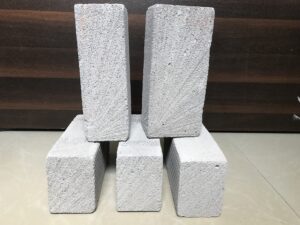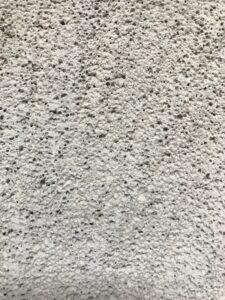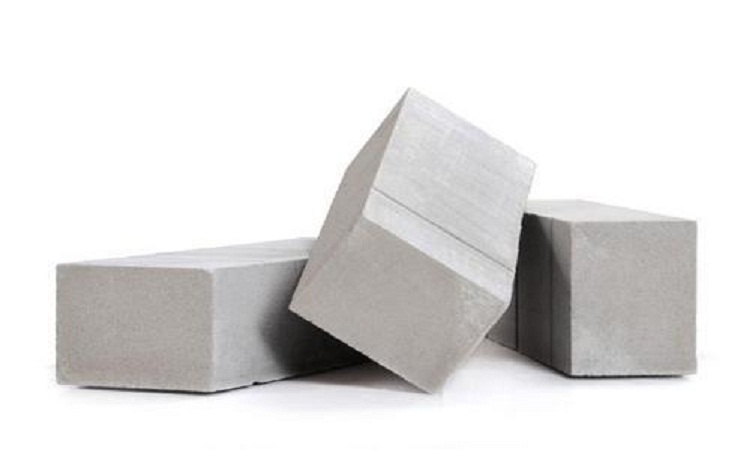What is Cellular Lightweight Concrete (CLWC)?
Cellular lightweight concrete (CLWC) is a mixture of cement, water, and pre-formed foam. This material is mixed to a pumped into any void and specified density. The fundamentals are simple, but the application and the ability to mix properly and at high production rates can be challenging.
Cellular lightweight concrete (CLWC) is a concrete having applications ranging from insulting fills to structural elements. The special characteristics of cellular lightweight concrete are obtained by controlling the density which affects properties like strength, modulus of elasticity, thermal conductivity, porosity, weight, etc.
In the year 1914, the Swedes discovered a mixture of natural materials like cement, lime, water, and sand, which expanded on adding aluminum powder. The result was a material like wood that did not have the disadvantage of combustibility and termite damage. Further development of this material led to what is now known as autoclaved cellular lightweight concrete. This concrete is precast, manufactured stone, an economical, environment-friendly, cellular, lightweight structural material featuring thermal and acoustic insulation. This building material was adopted by the Europeans much before the Americans.
After World War II, cellular lightweight concrete has been used extensively with great success in residential, commercial, and industrial construction throughout the world. However, it has not made its mark in India. High-rise buildings need to be incorporated with many design features. An important feature is “earthquake resistance”, which can be incorporated by making the upper floors lighter. Cellular lightweight concrete used in the upper floor as walls and floor panels enables the high-rise buildings to be more earthquake resistant besides giving economy due to load reduction.


Constituents of Cellular Lightweight Concrete
Important constituents of cellular lightweight concrete (CLWC) are given below:
- Aggregates
- Cement
- Foam Concentrate
- Water
- Fibers
- Admixtures
Aggregates
Cellular lightweight concrete having a density more 800 Kg/m3, commonly includes natural or manufactured sand aggregates. Other types of aggregates that are normally added can be any of the following.
- Aggregates prepared by heat processing such as expanded perlite and exfoliated vermiculite.
- Aggregates prepared by expanding calcining or sintering products such as blast furnace slag, clay, fly ash, shale, or slates.
- Aggregates prepared by processing natural materials such as pumic, turf, or scoria.
Extra lightweight aggregates such as polystyrene beads, vermiculite, and perlite are considered low density and can produce concrete weights as much as 800 Kg/m3. Their compressive strength can vary between 0.69 to 6.90 Mpa. They have high insulative qualities.
The maximum size of aggregates should not be more than
- One fifth (1/5) of the dimensions between sides.
- Three-fourth (3/4) of the maximum clear spacing between individual reinforcing bars.
- One-third (1/3) the depth of the slab.
- Cover over reinforcement.
Cement
All cement available in India including high early strength can be used.
Foam Concentrate
The foam concentrate must be a chemical composition that is capable of producing stable foam cells in concrete. It can resist physical and chemical forces imposed during the entire mixing, transporting, placing, and setting of concrete. The stability of the foam is measured by the change in density during the time between mixing and initial set.
Type of Foam – The two methods of adding foam concentrate in the mix are as follows:
Preformed Foams – This is made by blending the foam concentrate, water, and compressed air in a predetermined proportion in a foam generator. The preformed is added in a predetermined quantity to the slurry of cement, aggregates, and water in the batching or mixing equipment to produce cellular lightweight concrete of the desired density.
Mixing Foams – Foam concentrate, water, cement and aggregates are mixed in an open mixer at a high speed. The mix density will be a function of the following:
- Quantity and characteristics of foam concentrate
- Type of aggregate.

Water
Good quality drinking water (potable) or water that is normally used for concrete should be used.
Fibers
Steel, resin-coated glass, or alkali-resistant glass fibers of sufficient length are quite often used in cellular lightweight concrete to reduce shrinkage cracking at an early age. Fibers must bond nicely with the concrete to develop the required resistance to tensile forces at any section.
Admixtures
Admixtures may be used to effect specific changes desired in the properties of cellular lightweight concrete in the plastic as well as hardened stages. The compatibility of ingredients of cellular lightweight concrete with one another should be determined by appropriate tests. Pozzolana is often used in normally cured, low-pressure steam cured and high-pressure steam cured cellular lightweight concrete.
Types of Cellular Lightweight Concrete
Cellular lightweight concrete is differentiated into three types based on the range of density, which is produced for different purposes.
High Density Cellular Lightweight Concrete
The density range of this cellular lightweight concrete is 1200 Kg/m3 to 1800 Kg/m3.
Medium Density Cellular Lightweight Concrete
Medium-density cellular lightweight has a density in the range of 800 Kg/m3 to 1000 Kg/m3.
Low Density Lightweight Concrete
Low-density lightweight concrete has a density in the range of 400 Kg/m3 to 600 Kg/m3.
Mixing Procedure of Cellular Lightweight Concrete
The sequence of loading the ingredients into the mixer is as under:
- The required amount of water
- Water-soluble admixtures
- Cement
- Foam Concentrate
- Aggregates
- Preferred foam (if foam concentrate is not used)
- Other admixtures
This sequence results in minimal destruction of air bubbles in the concrete which forms the cellular structure during its production from mixing to initial setting. This determines the concrete density for a given amount of solid particles. Materials should be so proportioned that the design wet unit weight is correctly obtained at the point of placement.
Depending upon the method of placement such as mechanical or pneumatic pumping, for any unit weight changes, additional agitation may be required.
If a transit mixer is used for mixing and transporting cellular lightweight concrete, the preformed foam should be added at the job site prior to conveying the concrete into the forms or just prior to pumping. Mixing should be carried out for sufficient duration and the speed of mixing also needs to be designed to get suitable results.
Forming and Placing
Cellular lightweight concrete, especially without coarse aggregate may be very fluid and workable. It is desirable that formwork is right, non-absorptive, designed to resist the hydrostatic pressure, and prevents the grout or cement paste to leak. If concrete is reinforced, provisions should be made for accurately locating the reinforcement in the form. The application of proper mould oil on the forms to prevent adhesion of concrete should be done very nicely prior to placing any reinforcing steel. A continuous supply of cellular lightweight concrete at the placing site without segregation of materials is essential. It is essential to avoid changing the density of cellular lightweight concrete, by over vibration, from the selected value.
Finishing
In the case of cast-in-place cellular lightweight concrete flatwork, finishing varies with the end-user. After screeding to level by a straight edge, the floor may be floated or steel trowel. The finish required must be compatible with the intended specified topping.
Curing
Plastic shrinkage cracks in fresh cellular lightweight concrete floors and slabs may appear to be abnormal when rapid drying conditions such as heavy winds. High ambient temperature and low humidity exist. Concrete may first bleed when placed. If proper precautions such as wind barriers, to avoid windy conditions at the placing area are provided adequately and immediate curing is started, plastic shrinkage cracks will be prevented. Otherwise, an irregular non-continuous crack pattern may be formed. Even though subsequent finishing with a trowel may close the cracks on the surface, a weakened section may remain which can be vulnerable to cracking again at a later stage.
Curing by fogging is essential immediately after completion of the final finishing. Application of a curing compound or any other effective curing method can also be used.
Advantages of Cellular Lightweight Concrete
Reduction of Dead Load
The reduction in foundation loads may result in smaller footing, fewer piles, smaller pile caps, and less reinforcing. Reduced dead loads may result in smaller supporting members resulting in a major reduction in cost and result in larger space availability.
Considerably lower weight
Weight reduction is obviously beneficial in transport, where almost half of the mass of building material being used transportation cost is also reduced considerably, impacting crane usage, where either larger panel can be erected, or the full capacity in the span.
Thermal Insulation
Cellular lightweight concrete act as a perfect thermal insulation.
Fire Protection
The air-embedded in the cellular lightweight concrete is also instrumental for the high fire rating. In 1200 Kg/m3 density a 13 – 14 cm thick wall has a fire endurance of five hours. The same delay occurs with a 400 Kg/m3 layer of cellular lightweight concrete in only 10 cm thickness.
Sound Insulation
Cellular lightweight concrete has good sound absorption properties. The absorbency of airborne sound for 3” and 4” wall panels is 38-40 db while for 8” wall panels, the same is about 45 db.
Saving time and cost
Saving in manpower cost. Only a few workers are needed to produce cellular lightweight concrete for casting or pouring of panels, blocks, or even complete walls for houses.
Cost – efficient
Using only fly ash, cement, water, and foam, the cost for one cubic meter of cellular lightweight concrete in most cases is less, even than for the equivalent volume of conventional concrete.
Self leveling
Cellular lightweight concrete is naturally self-leveling or self-compacting, filling the smallest voids, cavities, and seams within the pouring area.
Application of Cellular lightweight concrete
- Convenient for use in congested and water-deficient areas.
- Suitable for use in the multi-storied buildings for external and partition walls.
- Suitable for use in cotton godowns, ginning factories, textile mills, plastic, chemical, paper, and pulp industries, and other installation subject to fire hazards.
- Useful for safety and security from fire hazards, in banks and treasuries.
- For the construction of air-conditioned enclosures.
- For roof insulation in hot ambient climate. Can also be used as roof insulation on existing slabs.
- For additional floors on existing buildings due to its lightweight.
- For thermal stations and laboratories, where the risk of fire exists.
- For architectural features – such as fins, etc.

